
Things to Do | Visit Chiba | Latest update:2024/02/20
Kamogawa City is located along the southern end of Chiba’s Pacific coast, an area known for its stunning natural beauty and charming fishing communities. It may feel like a world apart from urban Japan, but the city’s main terminal, Awa-Kamogawa Station, is only about a two-hour train ride or express bus from Tokyo. Kamogawa is well-known for its luxury seaside hotels and for being the home of Kamogawa Sea World, but the area offers visitors much more to see and do, including the historic sites related to the founding of Nichiren Buddhism. We took a trip to Kamogawa to check out some of the local spots and give our recommendations to you.
If you’re looking for a place to stay in Kamogawa, please also check out the Kamogawakan hotel, our top lodging recommendation:
Trains run along the Kamogawa coast, making a visit here by rail a great way to check out Chiba’s seaside sights. While JR Awa-Kamogawa Station is the city’s main hub, a stop at one of the other coastal stations here offers a way to explore the more local side of Kamogawa. For this trip, we started at JR Awa-Kominato Station and headed for the charming Kominato Port District.
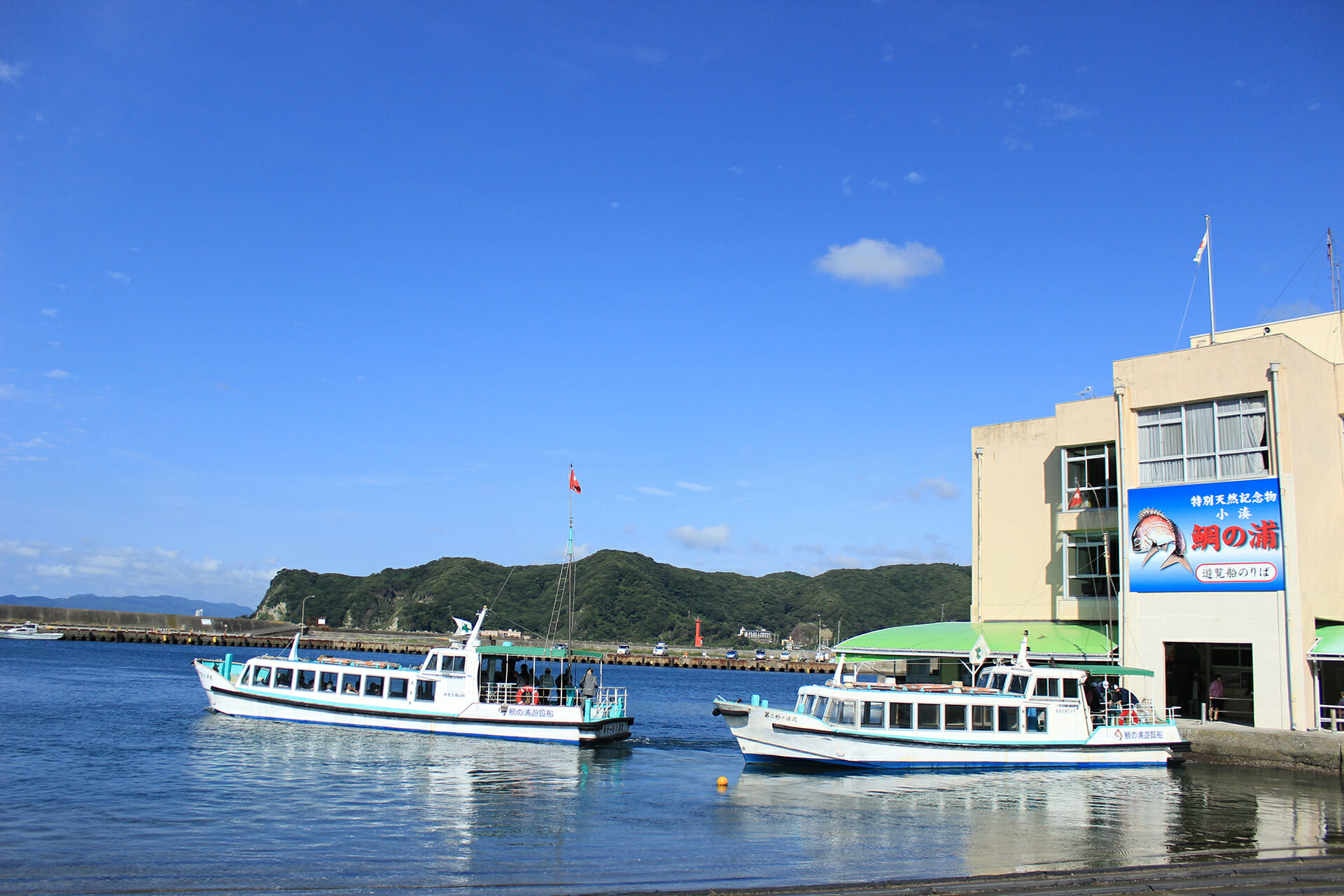
The Tai-no-Ura boat tour operates here in the Kominato district of Kamogawa, just a 20-minute walk from JR Awa-Kominato Station. The boat tour departs from the Kominato Port for a 20-minute trip (depending on the weather and the tide) out to Uchiura Bay. This spot is inhabited by massive schools of tai, Pacific sea bream, which the crew lure to the side of the boat with bait, often resulting in a feeding frenzy spectacle.
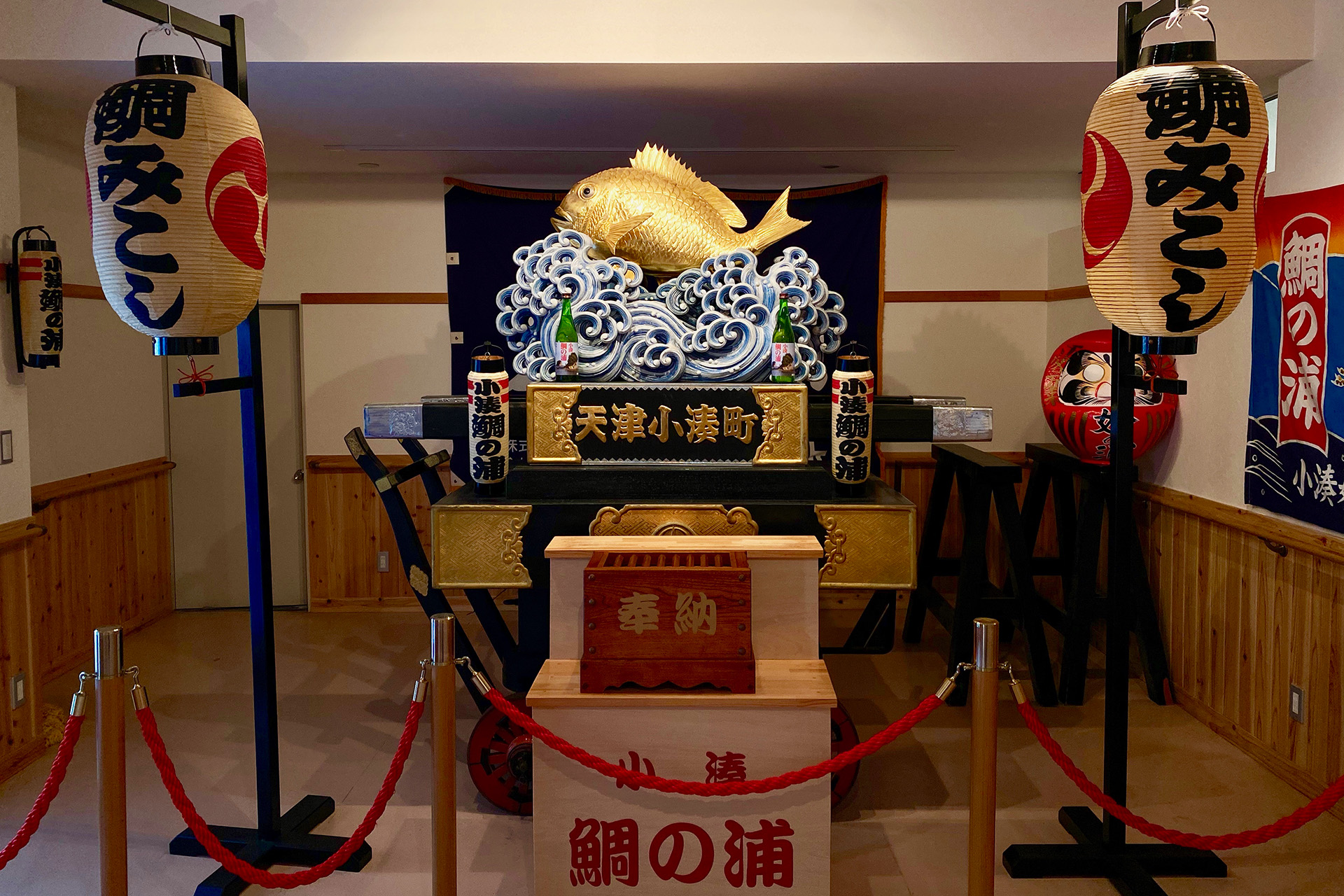 A small tai shrine in the boat tour port building.
A small tai shrine in the boat tour port building.
Uchiura Bay and the coastal Kominato area have been considered sacred for centuries, dating back to the birth of Nichiren, the founder of Nichiren Buddhism, here in 1222. According to local lore, three miracles occurred around Kominato at the time of his birth, one of which was the sudden increase in the number of sea bream in the bay. It’s said that even modern science can’t explain this large population of sea bream, as usually they reside in much deeper waters. The area has been protected by locals for centuries and in 1922 was officially designated as a Natural Monument of Japan, and then promoted to Special Natural Monument status in 1967.
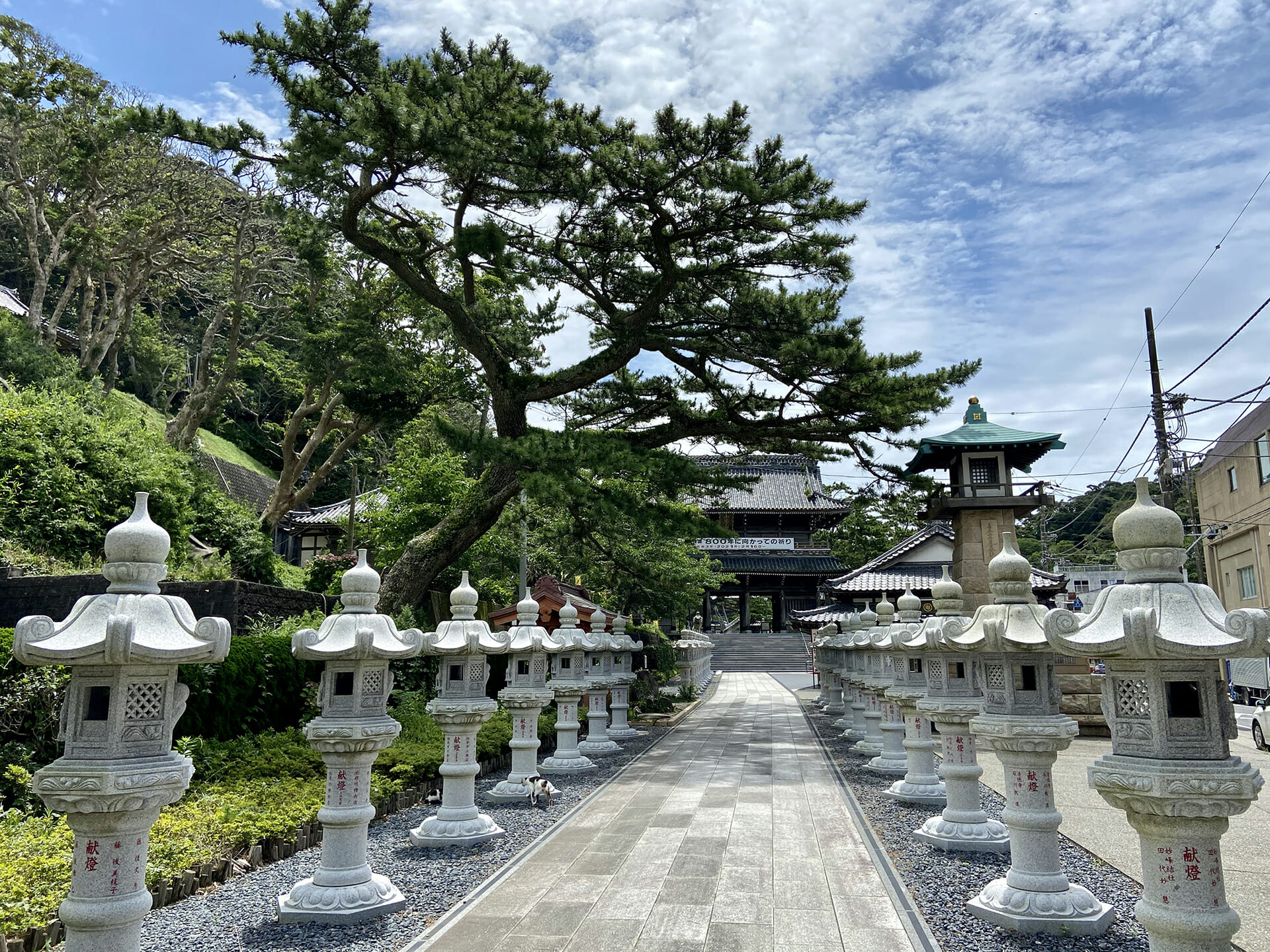
After our return to port, we headed across the street to the over 700-year-old Tanjo-ji Temple, a name which literally translates as “the birth temple” in English. It was said that another one of the miracles that accompanied the birth of Nichiren, the mysterious appearance of a natural spring, occurred at the site of the original temple. The temple’s history began when Nichiren returned to the place of his birth to tend to his critically ill mother. According to the story, his prayers for her health succeeded in extending her life another four years, and she built a shrine at the site to express her gratitude for this blessing. Twelve years later, a temple was founded here by one of Nichiren’s disciples.
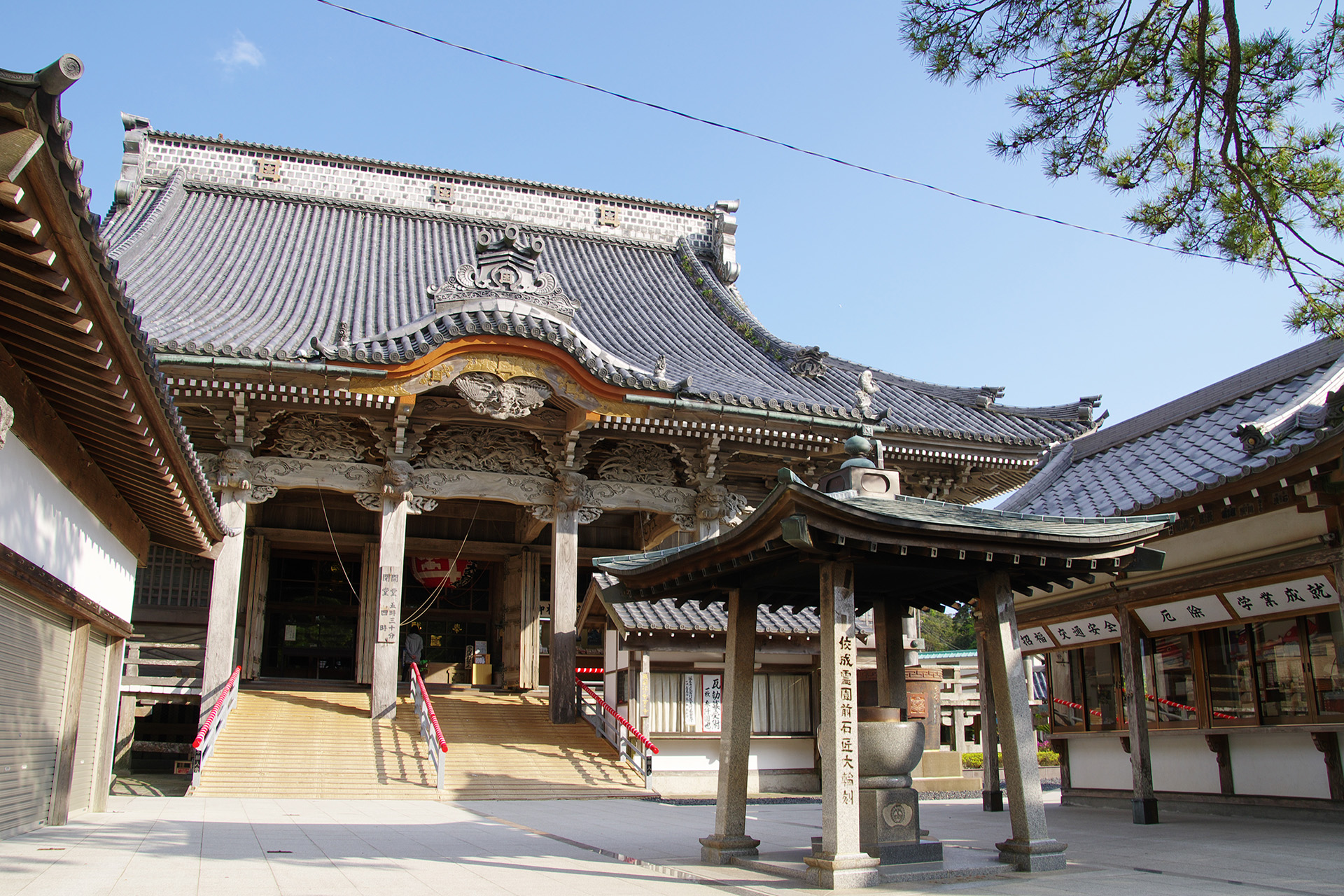
Visitors to Tanjo-ji’s current location are first welcomed to the temple grounds by the wooden Soh-mon gate, which leads you to a picturesque stone path that is lined with pine trees and surrounded on both sides by rows of stone toro lanterns. Follow the path to the impressive Ni-oh mon gate, a towering wooden structure built in 1706. Take a moment to admire its two-tiered roof which, as with much of the structures on the temple grounds, is elegantly covered with traditional Japanese kawara tiles. As you enter the grounds, you’ll find yourself immersed in a postcard-like scene of traditional wooden halls and Buddhist monuments. Follow the walking path and on your left you’ll find a statue which depicts Nichiren as a child. Continue along the path and eventually you’ll arrive in front of the Soshi-Doh hall, which was built in 1846 entirely out of keyaki zelkova wood. The hall’s interior houses a wooden statue of the Holy Priest Nichiren, which was crafted in 1363.
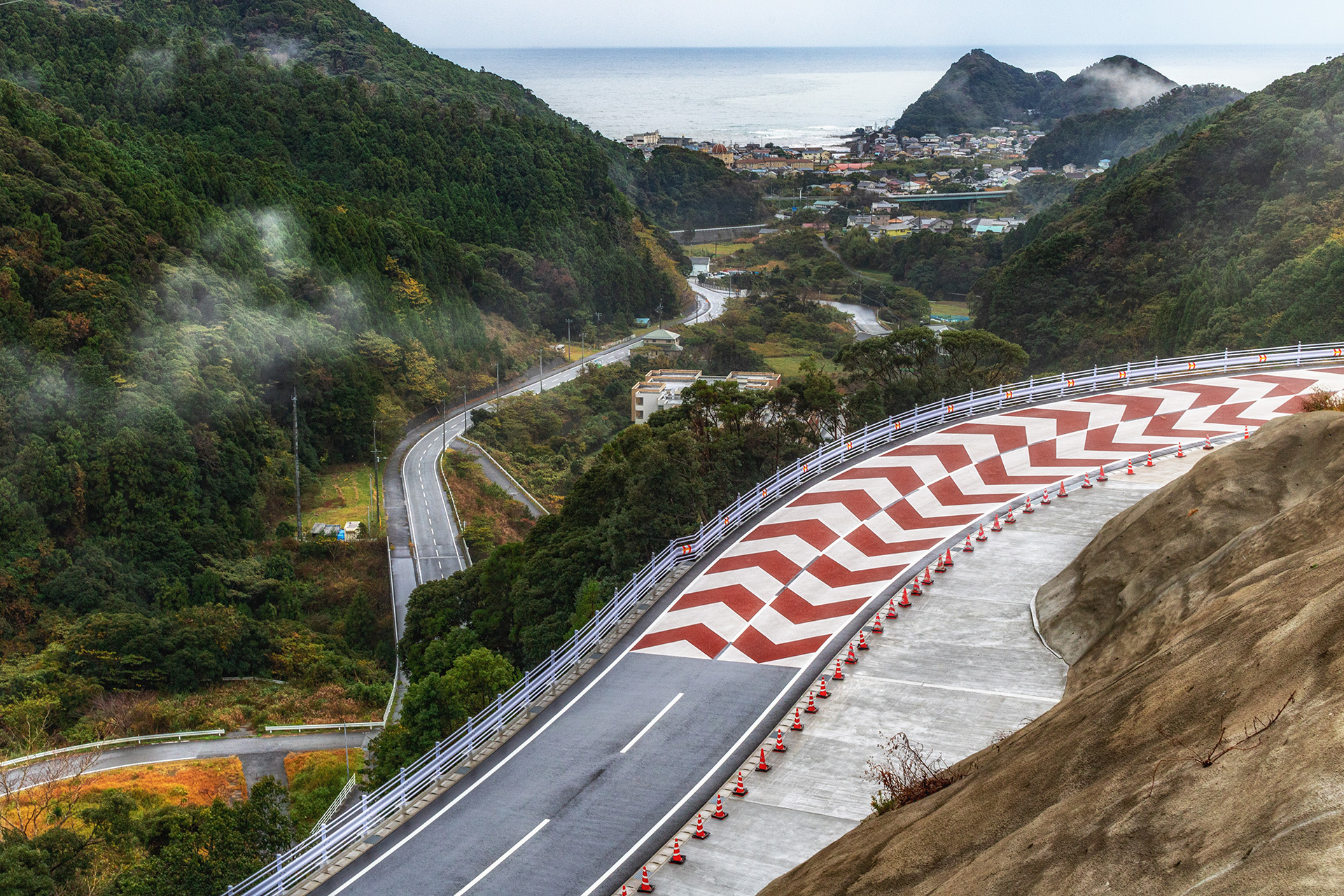
Although we only visited one of the many seaside districts here in Kamogawa, the city’s winding mountain roads and beautiful green valleys are also great places to explore, so for the latter half of this trip, we rented a car and headed inland. Our next destination was Seicho-ji Temple, another spot in Kamogawa intertwined with the legacy of Nichiren.
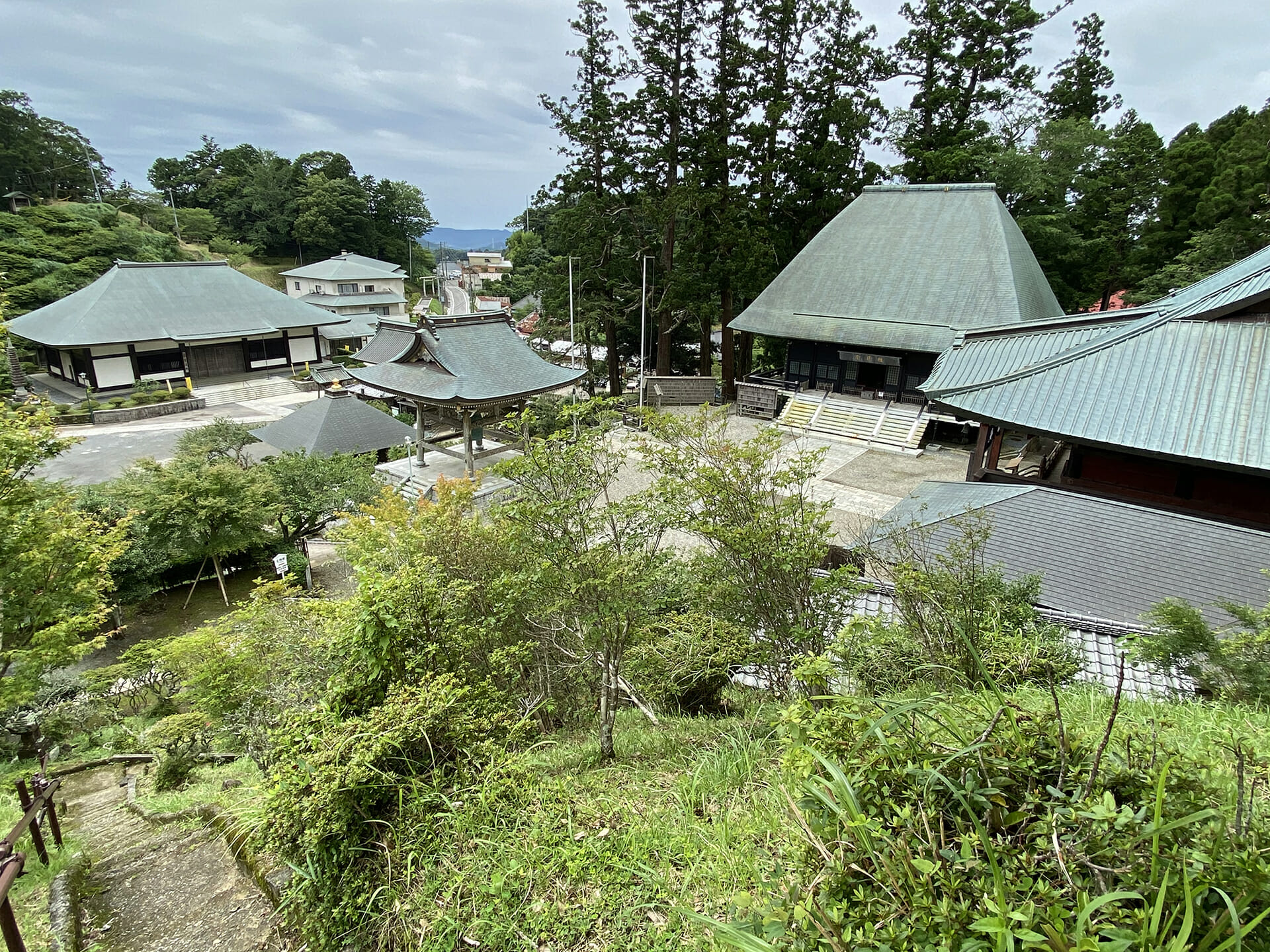
In 1233, when Nichiren turned twelve, he went to study in the mountains around Seicho-ji Temple. He was formally ordained as a monk there at the age of sixteen, and then left the Boso Peninsula to continue his studies at temples around Japan. In 1253 he returned to Seicho-ji where he determined he would establish a new branch of Buddhism.
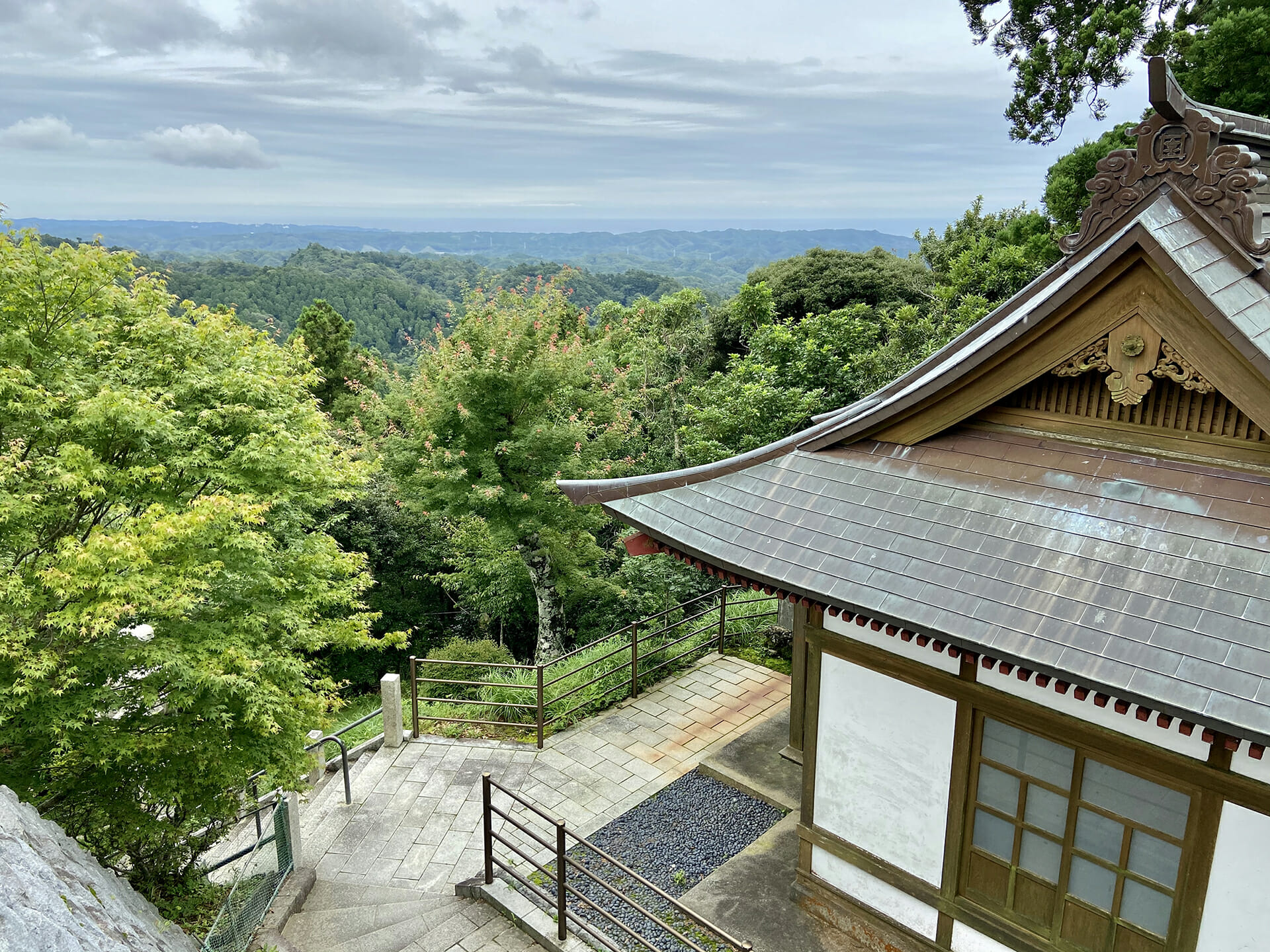
Upon visiting Seicho-ji Temple, you’ll start to understand how this serene natural environment inspired Nichiren. To get there you’ll take roads which wind up the same forested hills Nichiren once climbed. Once you arrive, take in a breath of the fresh mountain air and then enter the temple grounds through an over 150-year-old red wooden gate. Look uphill toward a complex of temple halls, their green-tiled roofs blending in with the verdant colors of the forest that surrounds them. Stroll past the thatched roof of the chuu-mon gate, then by the sen-nen sugi (lit. 1000-year cedar), an over-800-year-old Japanese cedar measuring 47 meters in height. From there, follow a path through the woods to the asahi-ga-mori- the Rising Sun Forest. It is said that at this spot, near the summit of Mt. Kiyosumi, is where Nichiren stood almost 800 years ago, watched the sunrise over the Pacific, and first declared his pursuit to establish what would become Nichiren Buddhism.
To learn more about Seicho-ji Temple, please read this article: visitchiba.jp/things/experience-the-monk-lifestyle-at-seichoji-temple/
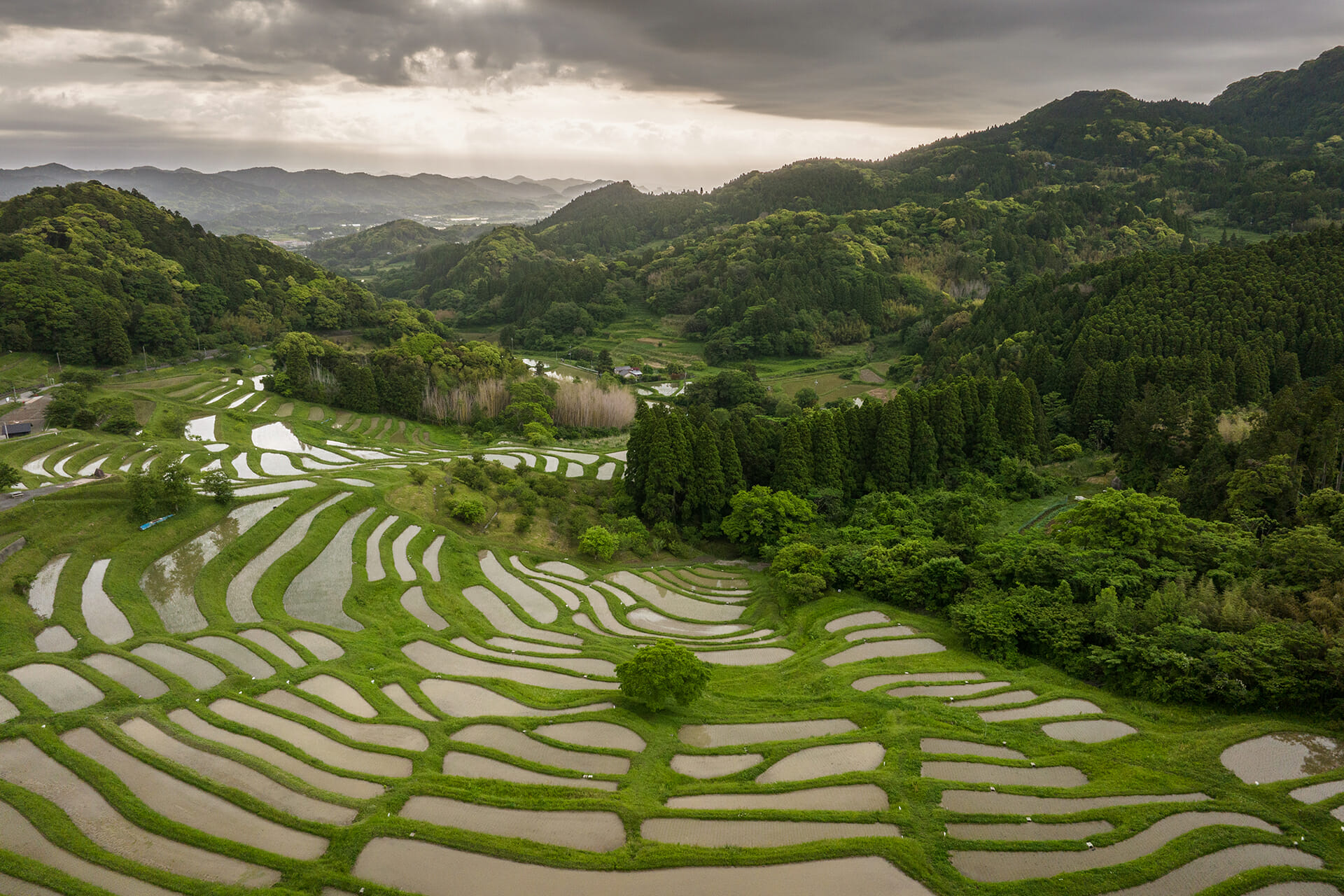
No trip to the mountains of Kamogawa would be complete without a visit to our last destination. Oyama Senmaida was selected as one of the “100 beautiful terraced rice paddies in Japan” and is the closest place to Tokyo to view terraced rice paddies. Oyama Senmaida sits on a staggered slope of 375 terraced rice paddies, a picturesque scene reminiscent of classical Japan. The paddies are operated on an “owner system” where locals and non-locals alike can adopt a plot of land and take part in rice cultivation. Oyama Senmaida offers splendid scenes no matter the season, whether it’s the vivid greens of the spring and summer, the golden hues of the fall harvest, or the shining light decorations in winter.
To learn more about Oyama Senmaida, please read this article: visitchiba.jp/things/oyama-senmaida/
183-8 Kominato, Kamogawa City
(A 20-minute walk from JR Awa-Kominato Station)
+81-4-7095-2381
183 Kominato, Kamogawa City
(A 20-minute walk from JR Awa-Kominato Station)
+81-4-7095-2621
322-1 Kiyosumi, Kamogawa City
(A 15-minute car or bus ride from Awa-Amatsu Station. Bus: Take the Kamogawa Community Bus, Kiyosumi Route, to the Seicho-ji bus stop.)
+81-4-7094-0525
Accessibility
540 Hiratsuka, Kamogawa City
(25 minutes by car from JR Sotobo Line, Awa-Kamogawa Station)
+81-4-7099-9050
Accessibility